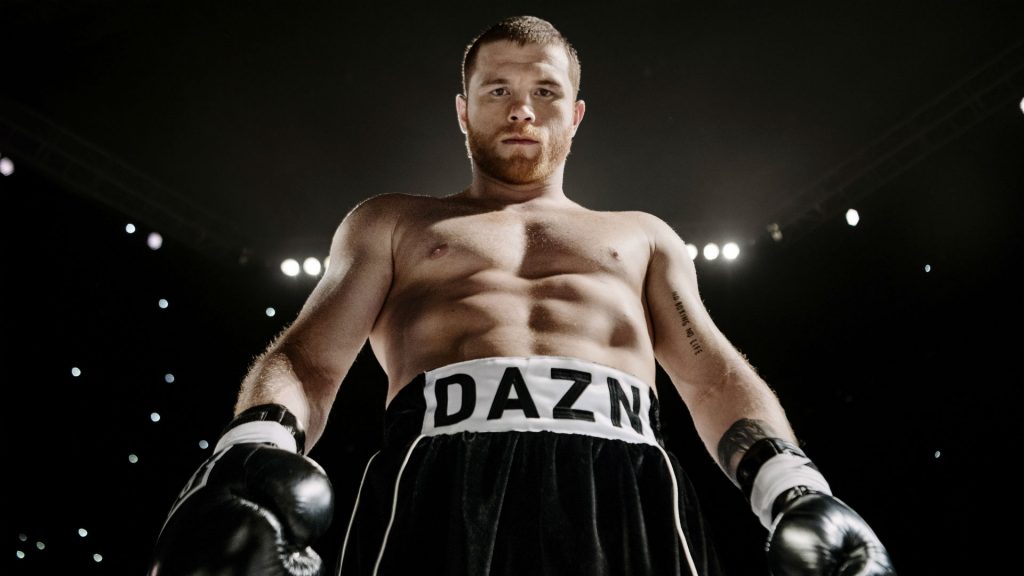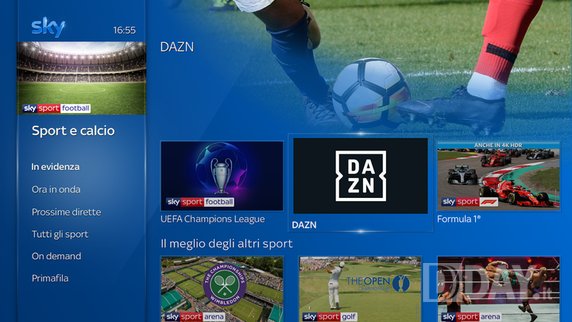
After more than 40 years of operation, DTVE is closing its doors and our website will no longer be updated daily. Thank you for all of your support.
‘Convenience and choice’ – sports streaming comes of age

At the time of writing, the sports world has ground to a halt. The English Premier League has been suspended indefinitely, while both the Tokyo Olympics and the UEFA Euros have been delayed until 2021, and Wimbledon – a staple in the British sporting calendar – has been cancelled for the first time since World War II. France’s Ligue 1 and the Netherlands’ Eredevise have been called off – the former determining final standings on a points-per-game basis while the latter has been rendered null-and-void.
Suffice to say that everything from the highest-profile tournaments to even the smallest events have been affected by the coronavirus pandemic.
However, while sport is taking a back seat – and rightfully so when issues of wellbeing and health are involved – it is easy to forget the quiet revolution that was going on in sports broadcasting in a pre-pandemic world.
The entertainment industry has been radically altered by the introduction of streaming services, and sports is no different. Through a combination of disruptive forces from start-ups, and initiatives from existing broadcasters and operators, sports viewers are embracing the options and flexibility afforded to them by streaming. And given the technological advancements across all aspects of the chain, truly online sports consumption without any sacrifices is now a reality.
There are several key reasons why consumers are becoming increasingly interested in streaming services for sports – and it’s not just because of marketing.
Much akin to entertainment streamers, there is a perception that OTT services offer greater value and control to consumers, says Omdia senior analyst Irina Kornilova.
“For now, OTT sports services managed to keep the price down, and that has been the major uptake factor. Flexibility of the contract, opportunity to buy either monthly, weekly or season passes for relevant sport has also been a positive factor in uptake,” says Kornilova.
Compared to pay TV operators who lock customers into expensive contracts – often for 18-24 months – the ability to dip in and out is a distinct selling point. One which both Sky and BT have cottoned onto, with both offering day passes to their sports products.
Joe Markowski, EVP of sports disruptor DAZN, is very matter-of-fact about consumer attitudes towards traditional pay TV packages and why streamers like DAZN are seeing such success.
“[Viewers are turning towards OTT services] because they’ve been exposed to an extremely fan unfriendly business model for the last 30 years in most major media markets,” he says.
“Pay TV and pay per view in some markets has eroded the appetites of fans – especially young fans – to regularly consume content. [They have] made sport inaccessible for large swathes of society.”
Markowski believes that the rise of sports streaming services such as DAZN is “consistent with why Netflix on an entertainment basis and Spotify on a music basis are so popular – people want access to content in a flexible, affordable and consumer-friendly way.”
He adds: “Consumers are tired of having their pockets raided on a monthly basis. In the UK it is easy to forget that in the US sports fans are being asked to pay a cable bundle of north of US$200 per month. On top of that if you’re a boxing fan you’re being asked to pay for three or four PPV shows a year at US$70-90. The cost of sports fandom in major media markets is incredibly high.”
DAZN, which had announced a major expansion to more than 200 markets – up from its current nine – prior to the coronavirus outbreak, is at the coalface of sports streaming as one of its early innovators and disruptors.
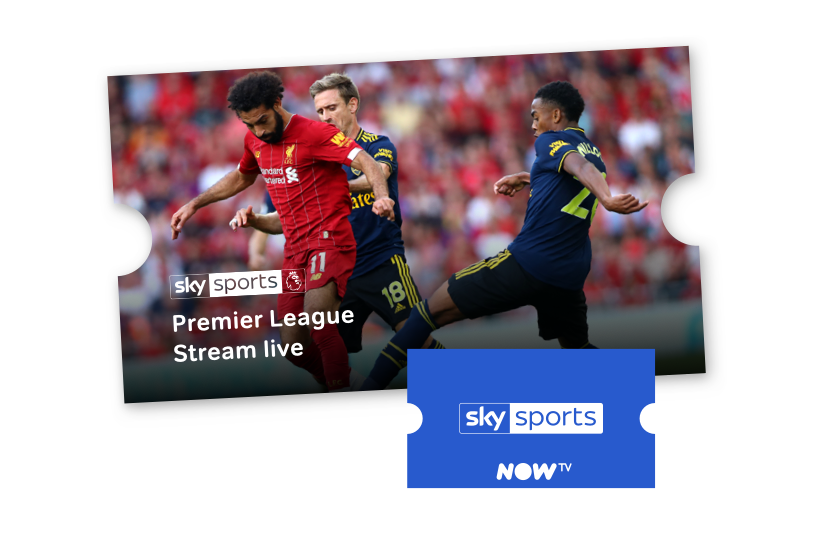 Operators like Sky had historically offered sports streaming either as an add-on for its existing customers or through skinny non-contract offerings like Now TV, but DAZN was arguably the first to make a major statement of intent as an OTT-oriented sports provider.
Operators like Sky had historically offered sports streaming either as an add-on for its existing customers or through skinny non-contract offerings like Now TV, but DAZN was arguably the first to make a major statement of intent as an OTT-oriented sports provider.
Since its 2016 launch in Austria, Germany, Switzerland and Japan, the company has gone on to be valued at more than £3 billion. Though that growth has been helped by the funding of Warner Music-owner and multi-billionaire Sir Leonard Blavatnik, and the guidance of CEO Simon Denyer and chairman John Skipper, the former president of ESPN, who resigned from the Disney-owned sports broadcaster in 2017 amid a high-profile battle with substance abuse.
Omdia estimates that the service has 6.41 million subscribers in its nine available markets – with those initial countries expected to hit 11.64 million by 2023 prior to the pandemic.
But while DAZN is arguably the face of this sports streaming revolution, there are an abundance of platforms that are looking for an audience.
Specialist v generalist
In the public eye. DAZN has been the pace-setter, though it has an interestingly varied model from market to market. In countries like Spain, Italy and Japan, DAZN holds a broad range of rights to major mainstream sports leagues and competitions. Meanwhile in others where scale and rights may still be somewhat out of reach, the streamer has focused on combat sports – primarily boxing – to create a heavily targeted product.
Streaming services – both for sport and entertainment – can largely be broken down as specialist and generalist offerings. The former is a business model which is less interested in attracting the masses and is instead focused on a highly-targeted product which caters to a vociferously passionate audience.
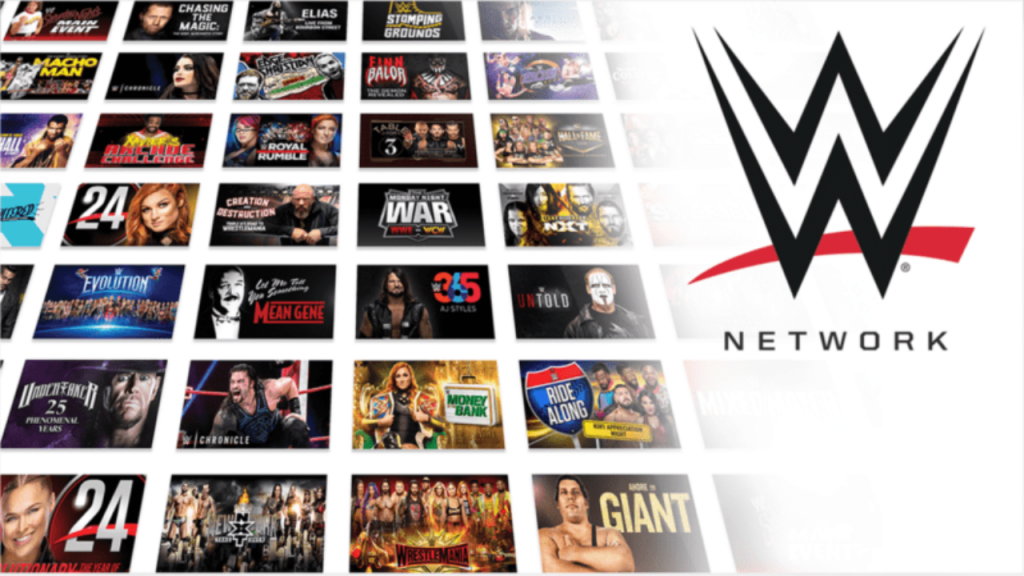 One such example in the world of sports is the WWE Network, which ended 2019 with a solid 1.389 million paid subscribers and is highlighted by Kornilova as a streamer of note. WWE has actually continued on course undeterred by the coronavirus and on April 4-5 streamed its marquee event Wrestlemania from an empty arena. The service launched in 2014 as one of the early innovators in sports streaming and effectively killed the pay per view model for professional wrestling by charging a flat monthly fee of US$9.99 per month.
One such example in the world of sports is the WWE Network, which ended 2019 with a solid 1.389 million paid subscribers and is highlighted by Kornilova as a streamer of note. WWE has actually continued on course undeterred by the coronavirus and on April 4-5 streamed its marquee event Wrestlemania from an empty arena. The service launched in 2014 as one of the early innovators in sports streaming and effectively killed the pay per view model for professional wrestling by charging a flat monthly fee of US$9.99 per month.
There certainly are benefits to approaching sports streaming from a specialist perspective, says Luke Gaydon, head of solutions and innovation at technology outfit Accedo. “Specialist streamers are able to concentrate on one particular sport or team and bundle extra information and content into a compelling service,” he says. “For highly dedicated fans, this type of offering is extremely appealing.”
However, some sport fans have more generalist tastes and prefer to have access to a range of different sports content in one place. It is challenging to predict which of the two models will be more popular as it varies depending on a number of factors. Generalist services might have greater reach as they are relevant to a larger number of customers, but specialist offerings will likely attract an extremely loyal user base amongst fans with a strong interest in a particular team or sport.
“OTT offerings give consumers a much wider choice of which sports to watch and when,” says Chris Clarke, CEO of video delivery vendor Cerberus.
“Rather than only being able to watch the specific sports or matches broadcast live on linear channels, it opens up access to a vast array of sports content, including niche sports.”
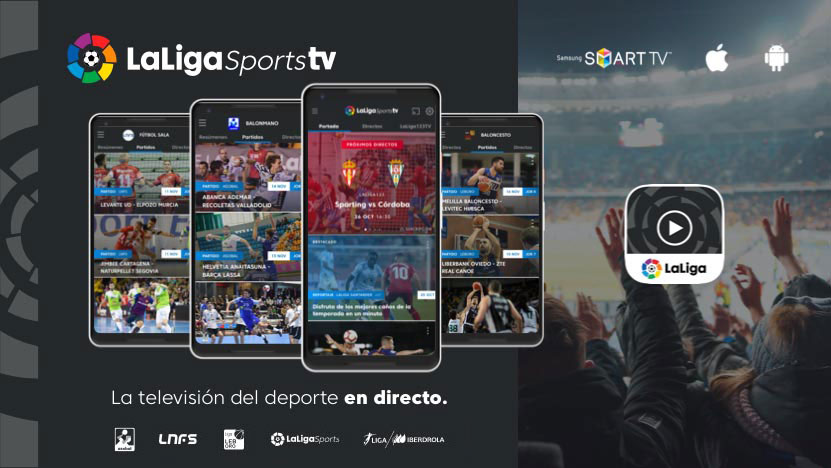 One streamer that covers a wide range of niche sports is LaLigaSportsTV which has over 725,000 app downloads (not to be confused with La Liga TV, the Spanish football channel launched earlier this year in conjunction with Premier Sports). It offers viewers in Spain free coverage of sports which would otherwise be drowned out by the mainstream leagues and competitions on linear TV. These include ASOBAL Handball, Liga LEB Oro – the nation’s second-tier basketball league badminton and weightlifting.
One streamer that covers a wide range of niche sports is LaLigaSportsTV which has over 725,000 app downloads (not to be confused with La Liga TV, the Spanish football channel launched earlier this year in conjunction with Premier Sports). It offers viewers in Spain free coverage of sports which would otherwise be drowned out by the mainstream leagues and competitions on linear TV. These include ASOBAL Handball, Liga LEB Oro – the nation’s second-tier basketball league badminton and weightlifting.
“LaLigaSportsTV began in 2016 with the LaLigaSports project, through which we offer advice to over 60 Spanish sports federations about how to create growth through creating the best audiovisual spectacle,” says Loreto Quintero, strategic projects lead, LaLigaSportsTV.
“LaLigaSportsTV naturally evolved from this and was launched with two objectives: to increase the visibility of lesser-known Spanish sports, while allowing us to develop expertise in the area of OTT, which has been a long-term priority for us.”
For Quintero, the appeal of sports streaming is “about convenience and choice.”
“Netflix has transformed the film-watching experience and consumers now expect to be able to find the content they want quickly and from anywhere. With OTT you can enjoy the live spectacle, catch up on demand and discover new competitions from the same platform. This allows the amount of available content to be increased dramatically,” he says.
Latency, quality and the user experience
As the sports world continues its indefinite hiatus, broadcasters and operators around the world will be looking to the future and the ways they can make their services even more compelling for the years to come.
What remains clear through this uncertainty is that streaming is in the ascendancy and is rapidly becoming many consumers’ preferred method of watching content. As new technologies such as 5G become more commonly adopted by both users and producers it becomes hard to imagine a future where streaming does not continue to dominate.
And while those technical limitations are being reduced, there still exists a perception of a decision having to be made between two key factors – quality v latency; speed of delivery v visual fidelity.
This is something that the Netflixes of this world don’t have to deal with to quite as much the same extent. A user may grumble at having to wait a few seconds for their bingeing show of choice to load, but sporting events can be ruined if you hear the neighbours celebrating a goal a couple of seconds before it flashes up on your screen. What’s more, money can be lost when bets are being placed and determined in a split-second.
This trade-off isn’t something that can just be focus-tested away, believes Cerberus’s Clarke.
“I believe that if you give the end customer the choice of a low latency/poorer quality feed or a high latency/better quality feed you’d end up with a near 50/50 split,” he says.
“It is important for the broadcaster to understand their customers’ viewing habits and priorities.”
Quintero errs on the side of prioritising latency reduction, particularly in an always-online era of Twitter updates and push notifications from apps: “In the world of high-profile live sports, low-latency is probably the top priority. If you provide a poor user experience full of delays, you will lose the viewer before factors such as broadcast quality come into question. Also because we are all connected through social media, often while matches are going on, latency can be responsible for spoilers in live sport.
For Darren Lepke, head of video product management at Verizon Media, the focus above all should be on creating a smooth user experience.
He says: “The three big hurdles and problem areas unique to live sports streaming are buffering, latency and picture quality, but while time behind live is something that is definitely important to viewers, high quality and high-resolution picture that allows viewers to experience fluid action without staggering picture, buffering or pixelation at any moment regardless of what is happening on screen is considered to be the most important aspect of sports streaming for viewers.”
However, he also adds that there’s another factor that must also be considered: scale.
“The bias has been pulling on quality and scale,” he says. For however quickly you can get a feed to one user, operators must consider the impact of delivering that feed to thousands and potentially millions of endpoints or else their product will not be viable.
With only limited amounts of bandwidth to go around – a particular issue that has been brought to the fore throughout the pandemic with mainstream streamers reducing their usage to ease the strain on a continent in lockdown – operators must ensure that they have the capacity to handle the strain.
Out with the old… and in with the old
Though discussions of OTT services are generally spoken of as a revolutionary and disruptive format for people to watch sport on whatever device they want and wherever they are, that simply won’t work for some users.
As with anything, accessibility is key to success and if sports streamers want to become big hits in the mainstream, it is important that they are still accessible in a way that is not alienating to less tech-savvy audiences.
“Even though we’ve seen changes to how we view media, the majority of viewers are still watching sports on their TV,” says Lepke. “But, whereas younger generations don’t have a problem knowing how to use non-linear television it needs to be made simpler for older generations who are not accustomed to this to buy sports through an application and streaming services need to make it as convenient as traditional television for someone to find and watch what they are interested in.”
It is for this reason that many sports streamers are battling to ensure they have a place on the set-top box.
Despite being openly critical of their practices, DAZN knows that it needs to ‘play the game’ in this sense.
“Operator distribution has been an essential part of our strategy,” says Markowski.
The streamer has deals with Comcast in the US, Comcast-owned Sky in Italy and Germany, and has risen to the top of the tree in Japan thanks in no small part to distribution agreements with Hikari TV and JCOM.
He adds that “operator partnerships are a good way of ensuring everyone becomes DAZN members,” particularly older audiences who are more accustomed to traditional linear TV and who may not want – or be unwilling to switch to – an interactive service with an intimidating catalogue of content.
He says: “I’m blessed to have parents in their mid-60s who are relatively digitally savvy for their age, but a lot of their friends and definitely my grandmother’s generation are definitely not as comfortable with it.
“It would be naïve, restricting and – I would stress – morally not appropriate if we ignored those groups of society. A big part of our promise to consumers is to make sport more accessible, more affordable and more democratised and we see operator and linear TV partnerships – when they make commercial sense of course – as a big part of that offer in certain markets.”
Quintero suggests that things might not be so straightforward. For DAZN with its lofty aspirations to be a mainstream player it is important to be accessible on the STB, but deployments should be examined on a case-by-case basis.
“Any rights holder needs to consider the needs of its audience before electing its broadcast strategy,” he says.
“Launching a platform like an OTT is not something that can be done quickly – it requires years of technology development and analysis of user preferences, leading to communications campaigns and selection of local partners. Where users demand the traditional model, the traditional model will be provided. We have been working on OTT technology for over three years and continue to study relevant data to make sure programming is well-directed to audiences who want to receive it.”
Gaydon at Accedo – like Markowski – draws upon his own familial experiences. He says: “My father still gets up at weird hours of the day to watch F1 races ‘live’. He knows he can record it or watch it on demand later on in the day but that’s not his preferred viewing behaviour. I don’t think we’ll ever see live linear sports programming disappear completely. Many sports providers are using OTT to complement existing linear offerings as opposed to replacing them altogether. This is a good middle ground, offering a bridge between the ‘old’ and ‘new’ ways of watching sport.”
This is the centre of the OTT sports revolution: giving audiences a way to watch the content they want to see in a manner that is affordable and accessible, innovative and yet familiar, and, above all, of unrivalled quality without sacrifice.
